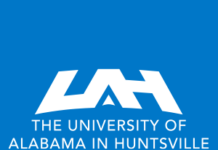 Alvernia University in Reading, Pennsylvania, has established a new program to improve the college readiness of low-income students in the city and to increase diversity on its campus. According to the latest Department of Education data, Black and Hispanics make up 20 percent of the 2,900-member undergraduate student body at the university. But Blacks and Hispanics are about 70 percent of the city’s population. About 40 percent of the city’s population lives in poverty.
Alvernia University in Reading, Pennsylvania, has established a new program to improve the college readiness of low-income students in the city and to increase diversity on its campus. According to the latest Department of Education data, Black and Hispanics make up 20 percent of the 2,900-member undergraduate student body at the university. But Blacks and Hispanics are about 70 percent of the city’s population. About 40 percent of the city’s population lives in poverty.
The new program will be run in cooperation with the Olivet Boys & Girls Club. Any member of the club will be eligible to participate in a four-year program of tutoring, mentoring, and other activities aimed at preparing teenagers for college. The teenagers will be coached on navigating the college application process and on finding sources of financial aid. In addition, as many as 20 students in the program each year will receive a full tuition scholarship to attend Alvernia University.












This sounds like an exciting program that has great potential. To realize its fullest potential, I would suggest the following strategies that will help the program document its success:
1) Whatever programs you have in place to assist your targeted students, make sure you have developed systematic strategies that will assist you in collecting data for all participants.
2) Develop formative assessment instruments to help you track and make improvements in any and all aspects of your program
3) Develop summative assessment instruments that will help you measure the expected outcomes that you feel will be the result of those who participate in your program (e.g. higher GPA in all high school subjects).
4) Evaluate the overall success of the program by the cohort of program participants to a cohort of non-participants. In this way, you can use empirical data to demonstrate your program’s effectiveness in serving your target population. This of course will also be a report that will be substantive for continued funding and/or program expansion.